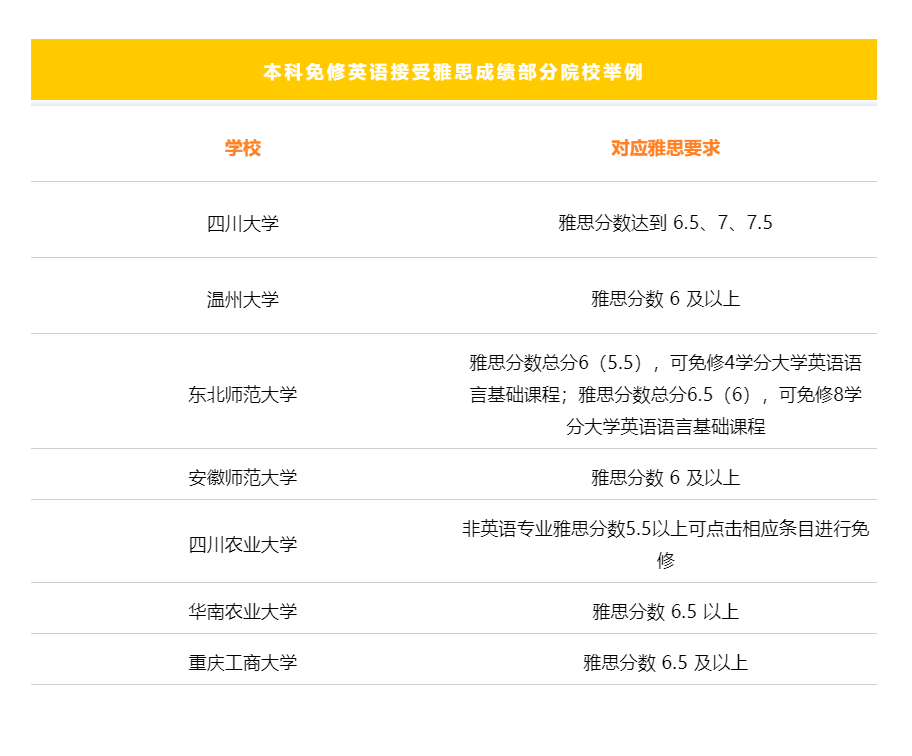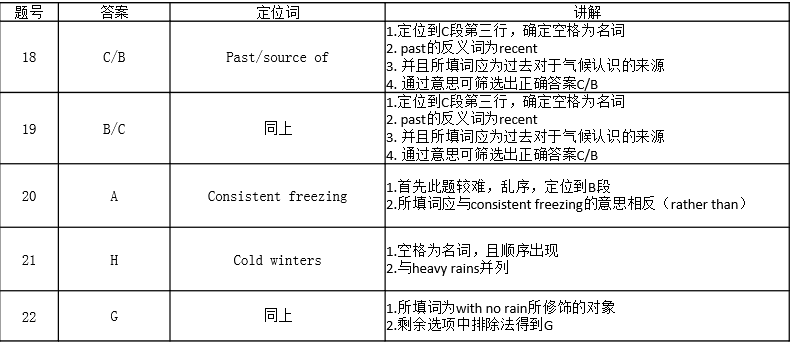雅思阅读的出题规律
众所周知,雅思阅读的文章通常都很长,如果学生采取先通篇阅读的方式,再进行答题,不仅非常耗时,今天小编给大家带来雅思阅读的出题规律,希望能够帮助到大家,下面小编就和大家分享,来欣赏一下吧。
雅思阅读的出题规律
1.顺序:雅思阅读考题基本上都是按照文章顺序来设置的;
2.首尾:统计发现在文章首尾句以及首尾段落,约有50%的考题出于此;
3.改写:出题关键字基本都是对文章内容的改写,几乎题目关键字没有与原文内容重复的;
4.图表:通常来说阅读文章中有图表的话,会在此设置相应的题目。
5.名词:名词基本上都是关键字,常常会设置相应的考题;
6.连词:表相似、递进、因果、转折以及比较的连词前后,通常会设置考题;
7.数字:阅读考试中也会出现一些带有简单运算的简答题;
8.下定义:破折号,同位语从句,定语从句,通常会出现相应的考题;
9.举例原则:For example/For instance/Such as等短语前面是考点;
10.特殊字体/符号原则:通常来说如果原文中有出现黑体,斜体,下划线,以及括号(),引号“”等,常常会设置题目。
雅思阅读点拨:掌握英语同义词是关键
一、英语词库,即你是否拥有英语对英语的同义词词库,还是只知道中文的意思,要知道这是国际性的英语考试所以他绝对不会以你做中国试题的思维考测你,雅思阅读就是全文的找答案,可是你所定位的词很多时候不会老老实实地坐在原文里等着你,这就需要你具备英语同义词的能力。
如有一道题目,是T/F/NG,题目是:The Medical reference books in Tang Dynasty range from both academical and
practicalcontents. 这句话的考点词是非常明确的,医疗书是否既包括学术,又包括实践的内容,如果只有其中一个,而不包括另一个,一定是NO。在原文中学生怎么也找不到答案,所以选了NG,你是绝对拿不到高分的,因为在原文中,academic变成了theoritical,然而practical却变成了pragmatic,medial reference books转为了medician texts,在学生应用对应法技巧时,如果没有同义词的积累,这题是做不出来的。
二、你的paraprase的能力,就是改句子的能力,但不是写句子,是让你改。高手都很擅长改句子,换了一句话或几句话来说,但是表达一样的意思。 这就是我说的in other words,这个能力在heading list题型里,淋漓尽致地体现了考官的此意图,如题目:The companyemployers show less caring to their staffs. 老板对员工不像从前那样关心了。
原文:The caring image of company has gone.公司关怀员工的形象一去不返了。多么的经典了,所以考官是希望你具备这样的识别能力,可是不做这方面的能力训练,如何能达到这样的识别能力?
三、句子主干的分析,当你通过同义词或paraphrase的能力找到答案所在处时,你要大概的知道这句话的意思,或者你要使用对应法的技巧。可是学生一看到许多单词都不懂,都不知道怎么做了,所以要有分析主干的能力,知道什么是要看的,什么不用看,这里面名堂就多了,老师的经验就充分的体现在这里。
并不是教你看得懂整句话的老师就是很棒,而是教你在单词都看不懂的情况下,仍然能看得懂,这才是最重要的。因为你到了国外念书,每日的阅读量是几百页,而且许多单词对你而言可能都很陌生,如果你把每个单词慢慢的查,每个句式慢慢地分析,你死定了,一天就算你牛,也最多20页左右,而且看完了,也不记得看了什么。这部分是典型的能力加技巧。
四、速度,要有“大义灭亲”的精神,一道题目1分半做不出,一定要学会放弃,告诉自己,一道题目算什么,17道没有了,我还能得6分呢。因为即使是最难的文章也会给学生送分的题目,所以千万要学会放弃
雅思阅读素材:药物研究失败的原因
The Triumph of Unreason
A.
Neoclassical economics is built on the assumption that humans are rational beings who have a clear idea of their best interests and strive to extract maximum benefit (or “utility”, in economist-speak) from any situation. Neoclassical economics assumes that the process of decision-making is rational. But that contradicts growing evidence that decision-making draws on the emotions—even when reason is clearly involved.
B.
The role of emotions in decisions makes perfect sense. For situations met frequently in the past, such as obtaining food and mates, and confronting or fleeing from threats, the neural mechanisms required to weigh up the pros and cons will have been honed by evolution to produce an optimal outcome. Since emotion is the mechanism by which animals are prodded towards such outcomes, evolutionary and economic theory predict the same practical consequences for utility in these cases. But does this still apply when the ancestral machinery has to respond to the stimuli of urban modernity?
C.
One of the people who thinks that it does not is George Loewenstein, an economist at Carnegie Mellon University, in Pittsburgh. In particular, he suspects that modern shopping has subverted the decision-making machinery in a way that encourages people to run up debt. To prove the point he has teamed up with two psychologists, Brian Knutson of Stanford University and Drazen Prelec of the Massachusetts Institute of Technology, to look at what happens in the brain when it is deciding what to buy.
D
In a study, the three researchers asked 26 volunteers to decide whether to buy a series of products such as a box of chocolates or a DVD of the television show that were flashed on a computer screen one after another. In each round of the task, the researchers first presented the product and then its price, with each step lasting four seconds. In the final stage, which also lasted four seconds, they asked the volunteers to make up their minds. While the volunteers were taking part in the experiment, the researchers scanned their brains using a technique called functional magnetic resonance imaging (fMRI)。 This measures blood flow and oxygen consumption in the brain, as an indication of its activity.
E.
The researchers found that different parts of the brain were involved at different stages of the test. The nucleus accumbens was the most active part when a product was being displayed. Moreover, the level of its activity correlated with the reported desirability of the product in question.
F.
When the price appeared, however, fMRI reported more activity in other parts of the brain. Excessively high prices increased activity in the insular cortex, a brain region linked to expectations of pain, monetary loss and the viewing of upsetting pictures. The researchers also found greater activity in this region of the brain when the subject decided not to purchase an item.
G.
Price information activated the medial prefrontal cortex, too. This part of the brain is involved in rational calculation. In the experiment its activity seemed to correlate with a volunteer's reaction to both product and price, rather than to price alone. Thus, the sense of a good bargain evoked higher activity levels in the medial prefrontal cortex, and this often preceded a decision to buy.
H.
People's shopping behaviour therefore seems to have piggy-backed on old neural circuits evolved for anticipation of reward and the avoidance of hazards. What Dr Loewenstein found interesting was the separation of the assessment of the product (which seems to be associated with the nucleus accumbens) from the assessment of its price (associated with the insular cortex), even though the two are then synthesised in the prefrontal cortex. His hypothesis is that rather than weighing the present good against future alternatives, as orthodox economics suggests happens, people actually balance the immediate pleasure of the prospective possession of a product with the immediate pain of paying for it.
I.
That makes perfect sense as an evolved mechanism for trading. If one useful object is being traded for another (hard cash in modern time), the future utility of what is being given up is embedded in the object being traded.
Emotion is as capable of assigning such a value as reason. Buying on credit, though, may be different. The abstract nature of credit cards, coupled with the deferment of payment that they promise, may modulate the “con” side of the calculation in favour of the “pro”。
J.
Whether it actually does so will be the subject of further experiments that the three researchers are now designing. These will test whether people with distinctly different spending behaviour, such as miserliness and extravagance, experience different amounts of pain in response to prices. They will also assess whether, in the same individuals, buying with credit cards eases the pain compared with paying by cash. If they find that it does, then credit cards may have to join the list of things such as fatty and sugary foods, and recreational drugs, that subvert human instincts in ways that seem pleasurable at the time but can have a long and malign aftertaste. Questions 1-6 Do the following statemets reflect the claims of the writer in Reading Passage 1?
Write your answer in Boxes 1-6 on your answer sheet.
TRUE if the statement reflets the claims of the writer
FALSE if the statement contradicts the claims of the writer
雅思阅读备考:词汇量的重要性
词汇是看懂一篇文章的前提,也是很多学生非常痛苦和急于解决的难题。从平时的阅读调查问卷里可以看出,很多学生都把“词汇”写在了雅思备考中最难准备的一项和阻碍雅思取得高分的“拦路虎”。由此可以看出,很多学生对词汇有些犯憷,但知道词汇是通往雅思考试,尤其是阅读考试必须跨越的一个门槛。学生们常常都会问要多少词汇量才可以攻克雅思考试?如何在短时间内迅速地提高单词的认识速度和扩大词汇量?哪些词汇可以忽略,哪些词汇必须知道并会灵活应用?下文中,专家就将对这些问题一一解答。
不可否认的是,考生要想阅读考到6分以上,就必须具备一定的词汇量。在这里笔者想提醒的是:雅思阅读考试中难免会遇到难词。正如雅思考官所言,IELTS考试对于本土人士 (native speaker)也是很有挑战的(challenging),即有些词汇对于English Native Speaker 而言也是生疏的,更何况是英语只是一门外语的中国学生?当然,这也不足为怪,一门语言就是一个世界,而我们每个人的知识又是有限的,因此不要强求和指望基础比较薄弱的中国考生要在短时间内掌握一万或两万的词汇。因为人的记忆有个漫长的规律:记住—遗忘—重复记忆—遗忘—记住的规律。因此,不要把词汇视为通往雅思高分的唯一条件。但对于词汇量比较薄弱的同学,在此提出以下建议:
一、对于备考时间紧凑的学员来讲,单纯地去积累词汇,是个耗时又不一定能够迅速见成效的方法。根据笔者多年的实战经验和教学经验,其实一个学生如果要上6,6.5,5000左右的常用高频单词就可以。而要上7分和8分的同学应保证有6000个或以上的词汇量。这些词汇包括:雅思阅读的高频词汇、及其同义词、近义词或同根词、以及英语中一些常用的固定搭配。
二、避免记忆一些人名地名、专业术语和又长又难或比较生僻的专业词汇,这些词汇并不是雅思阅读考试的重点,可以忽略不计。用一个符号来做一个标记就可以。没有必要把精力花费在这些单词方面。举例:The orbital cortex, the region that becomes active in Goel’s experiment, seems the best candidate for the site that feeds such feelings into higher-level thought processes, with its close connections to the brain’s sub-cortical arousal apparatus and centers of metabolic control.(摘自于剑桥真题的一句话)
在上述句子中所有的有下划线部分的名词短语可以忽略不计,或者是视作一个A、B、...符号,就可以了。是否知道这些词的真正含义并不影响对这个句子的理解。因此,这些词汇不在之前提到的5000,6000词汇之内。
三、在雅思阅读备考中,词汇只需达到认知(cognition)就可以,不要求书写。即使有填空题,那些词也是来自原文,所以只要考试时做到足够认真,就无需担心拼写的问题!故雅思阅读的词汇,与它混个脸熟,认识就可以了,没有必要天天用笔在纸上边发音、边拼写的那样辛苦记忆。
四、英语这门语言是个线性语言。词汇并不是我们理解文章的唯一途径。很多时候,我们发现这样的怪事:我们认识句子里的每个单词,但是就是看不懂句子所讲述的内容。原因很简单,我们只是单个去记每个词的含义,而忽略了:有时几个小词组合成一个新的词组,也可能延伸出与这些单个词本身含义完全不同的意思。如果不认识这个词组的整体含义,一切白费。如:rather, other, than这三个小词,应该是无人不知、无人不晓。但是:rather than, other than呢?又作何讲?二者又有什么区分?又有多少学员可以清楚地区分出来?又如:anything but, nothing but? out of question, out of the question? 而这些词组恰恰又是阻碍学员理解的难点和重点!所以要把注意力放在这些知识点方面!
五、建议考生多收集和积累一些英语中常用的惯用搭配。特别是每个词搭配成短语后,与原来各个单词的意思截然不同的短语。譬如在真题中出现过这样一个词组:have a bearing on…,在许多同学的头脑中知道“bear”这个单词做动词表示忍受;做名词指熊。但是这里这个词组却与这两个意思完全无关,这个词组的意思是:be linked to or associated with。由此可以看出,其实这些固定搭配在很多时候会阻止我们迅速理解原文句子,迅速得出正确答案。
总而言之,同学们要学会把有限的备考时间分配好,就像是把刀用在刀刃上。虽然有人说:你们年轻,有的是时间可以挥霍!可是毕竟备考是个很辛苦的过程。而且次次进考场,再加上学校要成绩的日子越近,心理上的压力就会越来越大。中国有句古话叫做:一鼓作气,再而衰,三而竭!所以一定要认真对待每次备考,注意学会策略和技巧,争取早日拿到理想的成绩!
雅思阅读的出题规律相关文章:
★ 英语阅读






